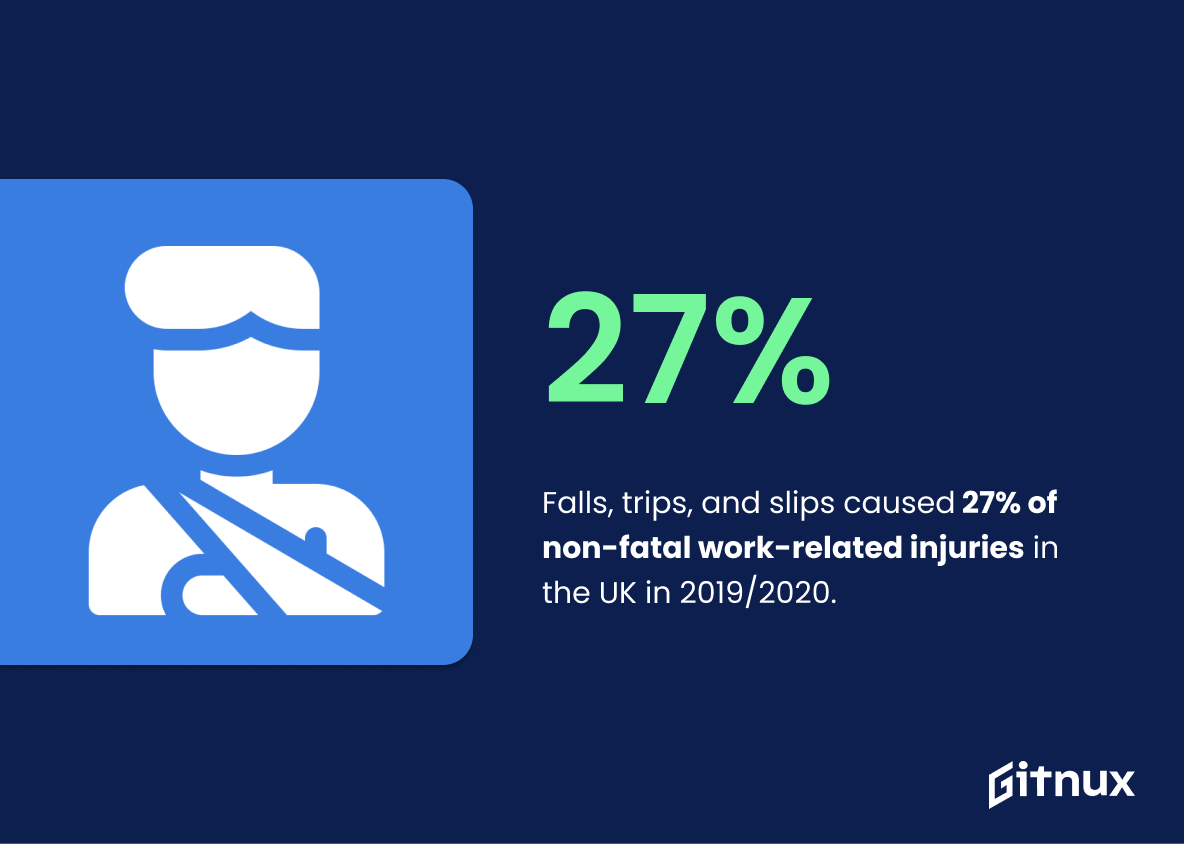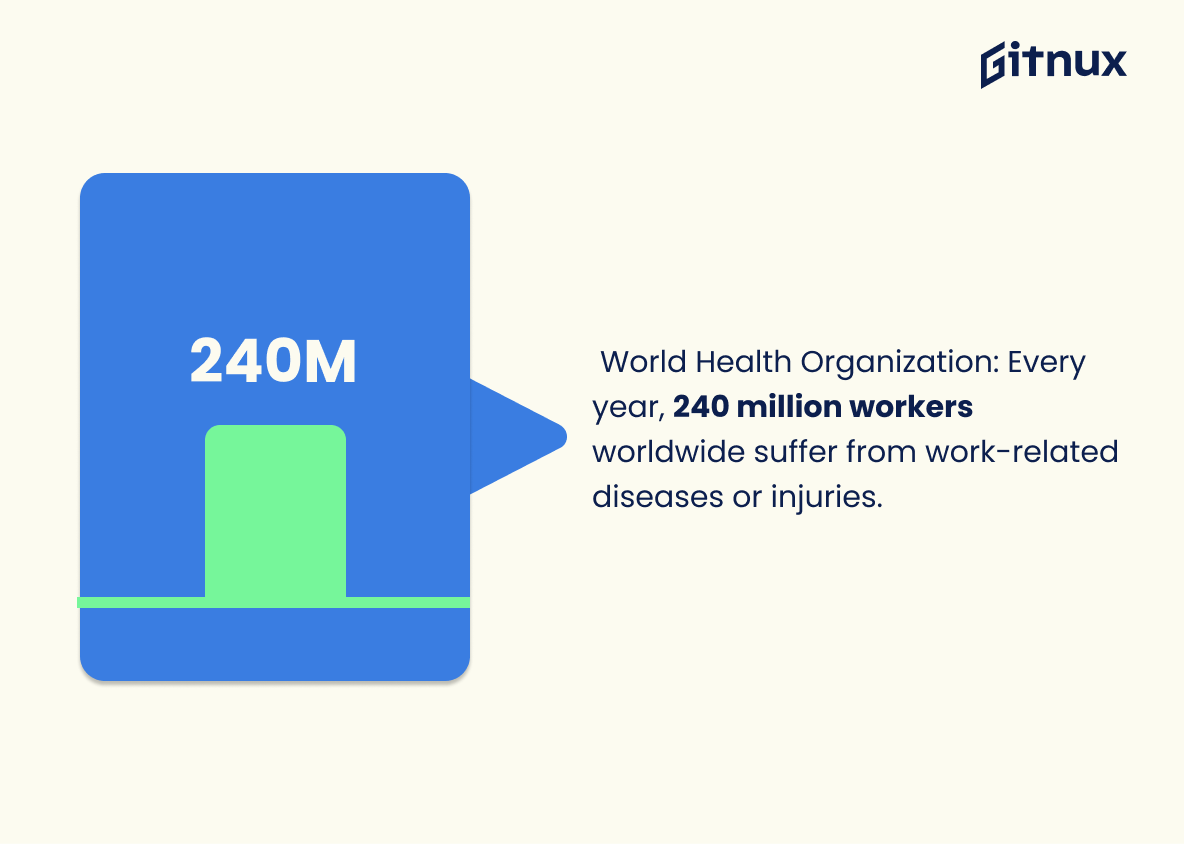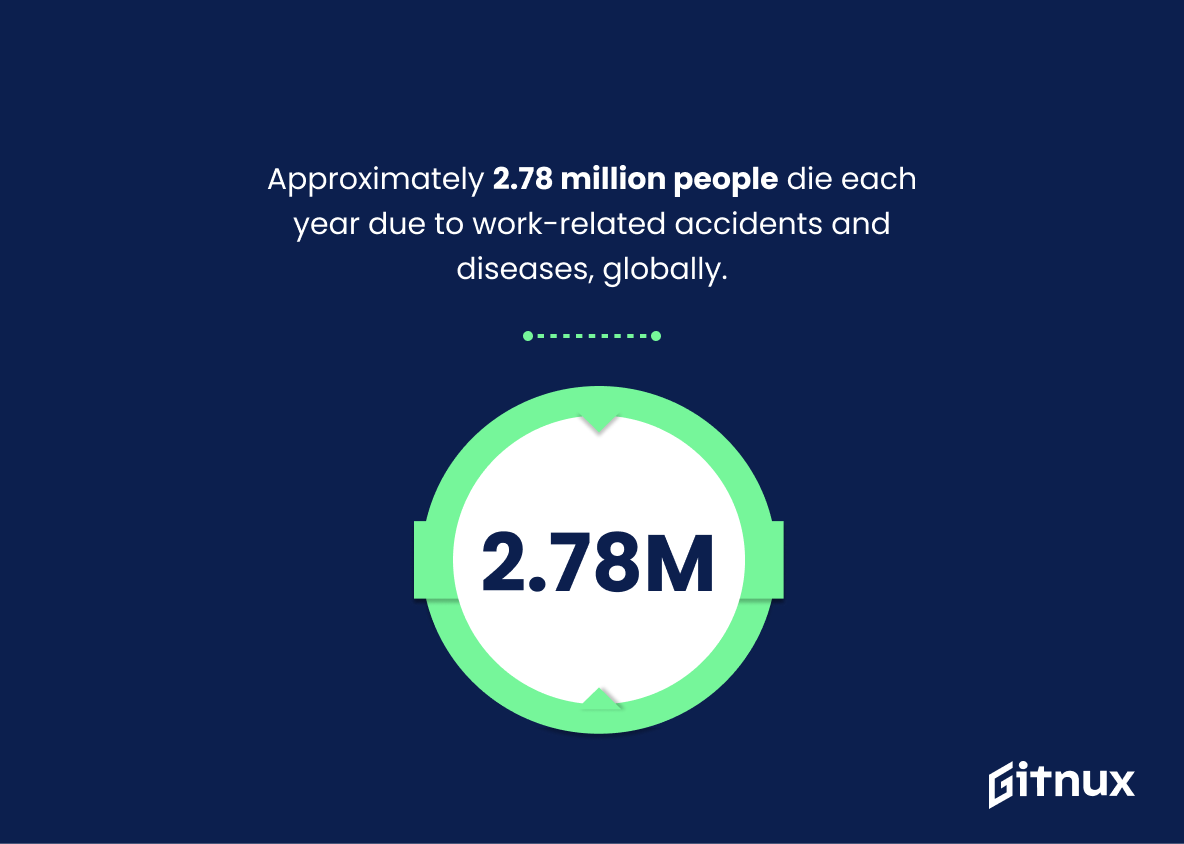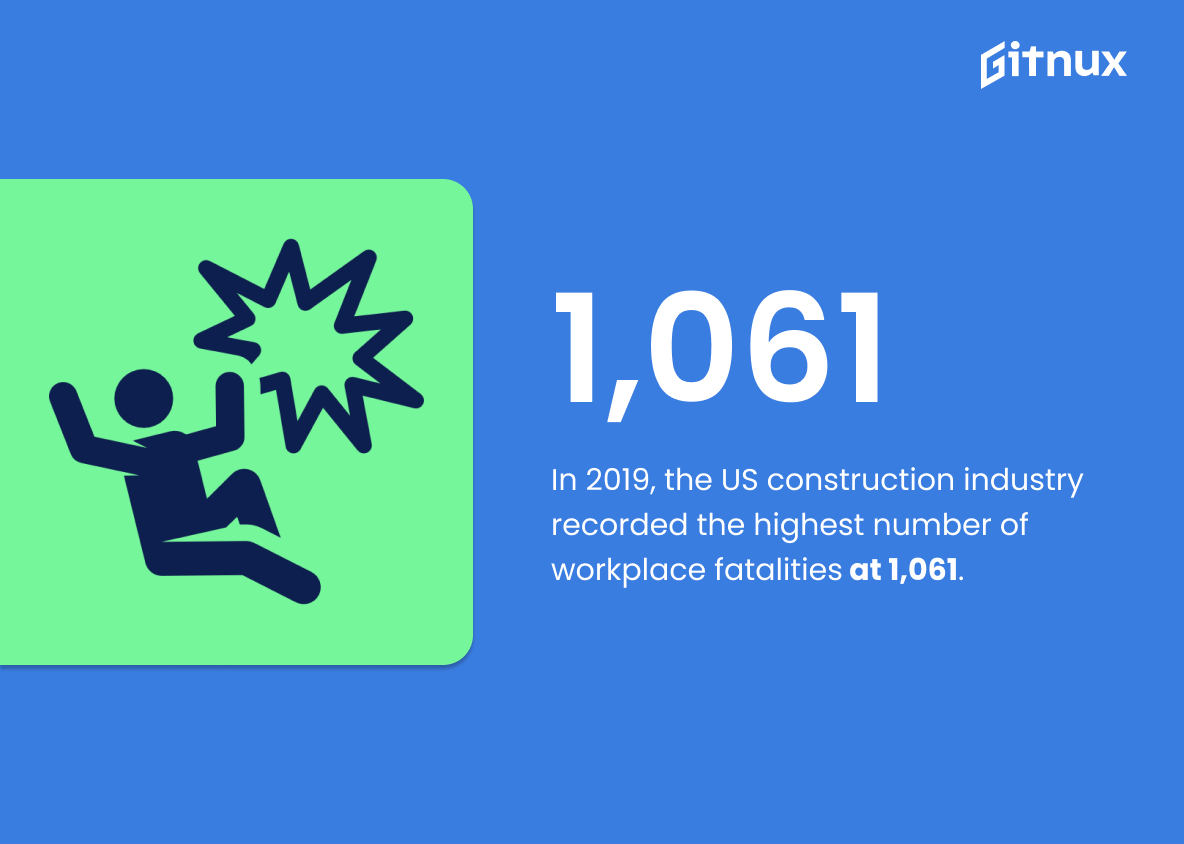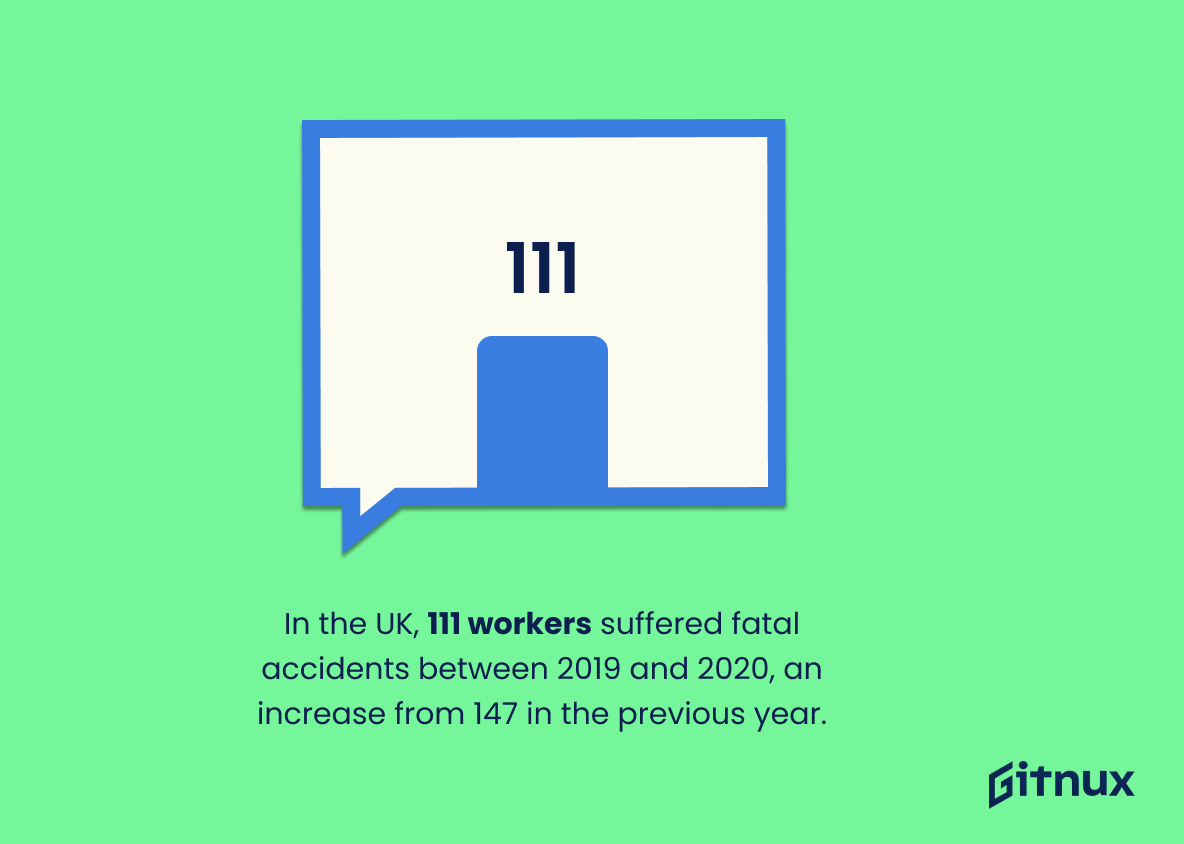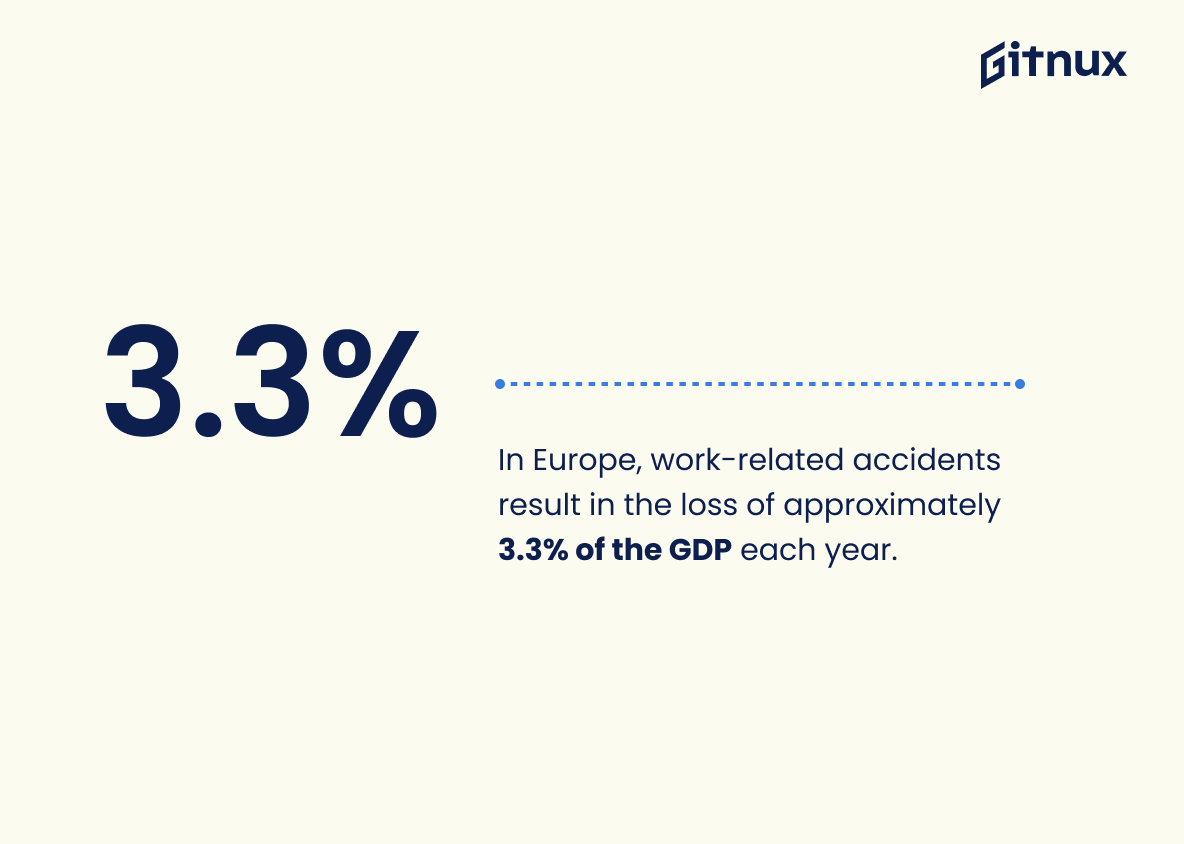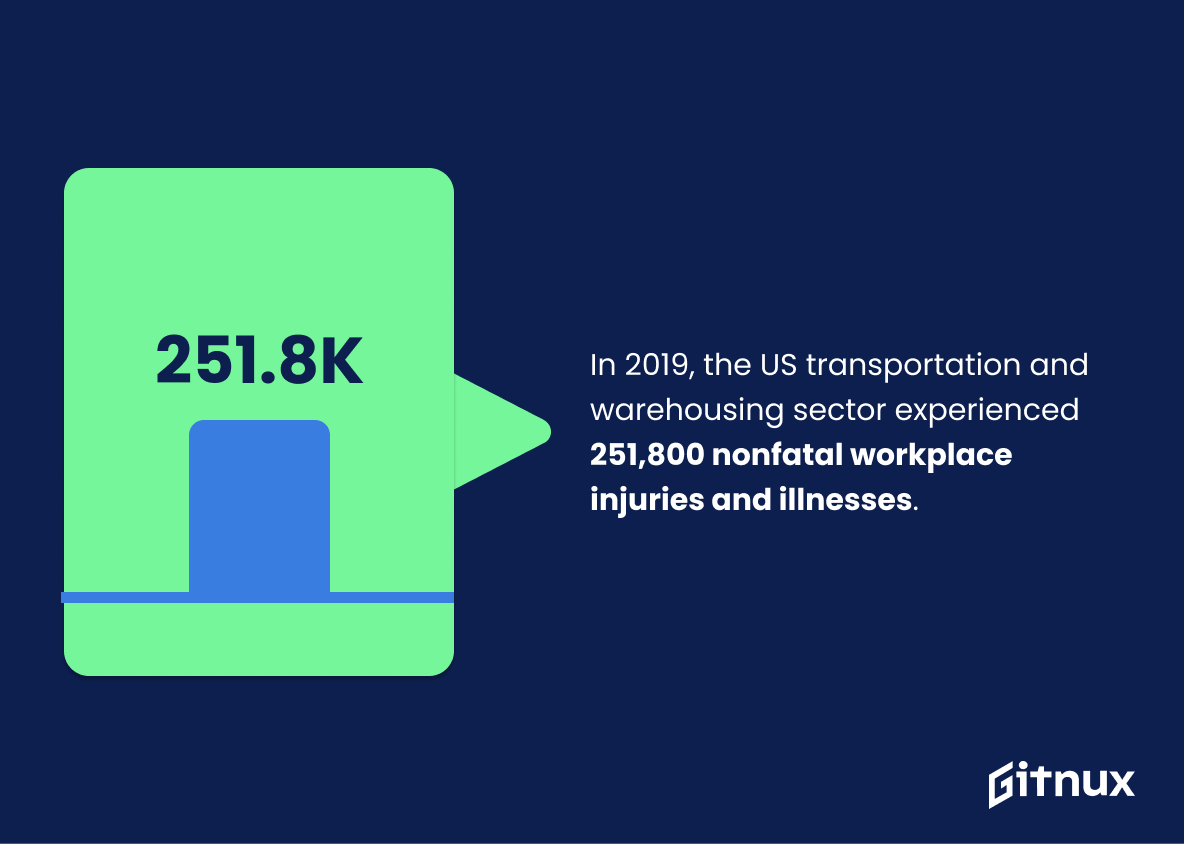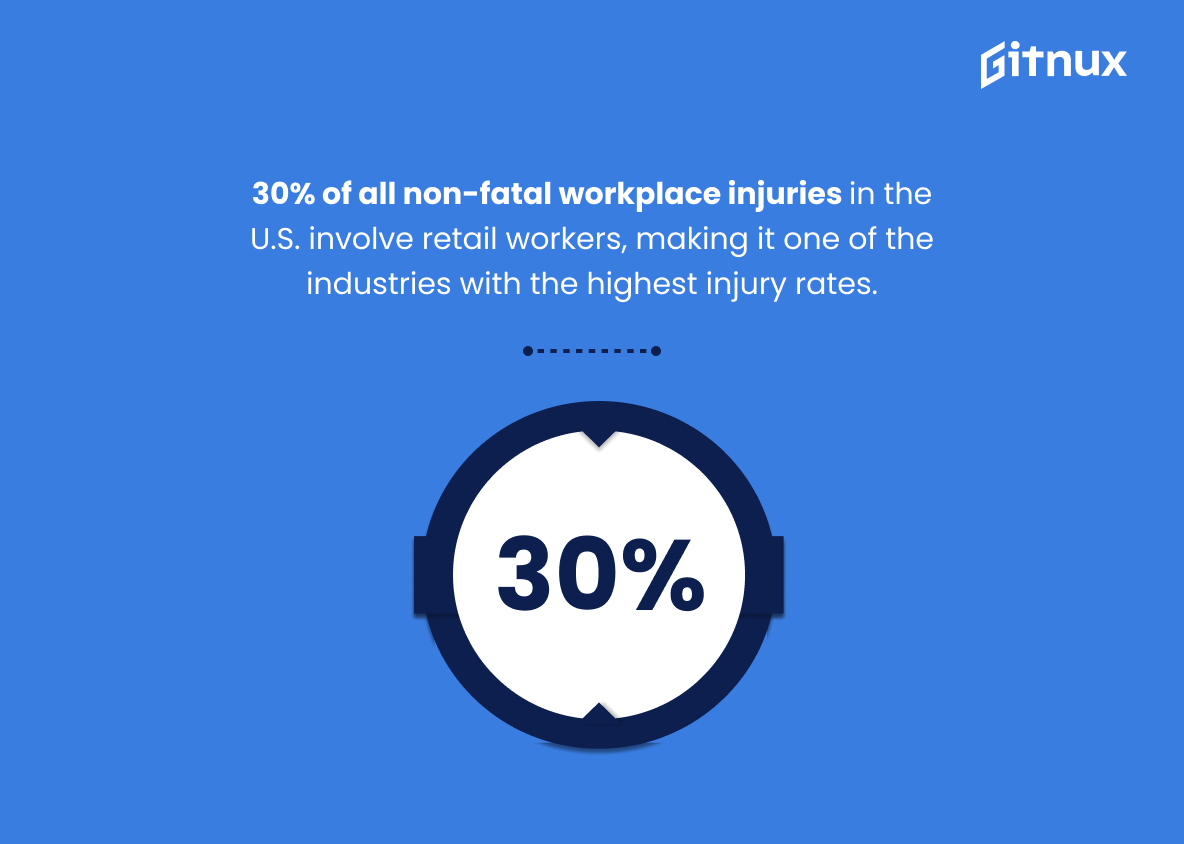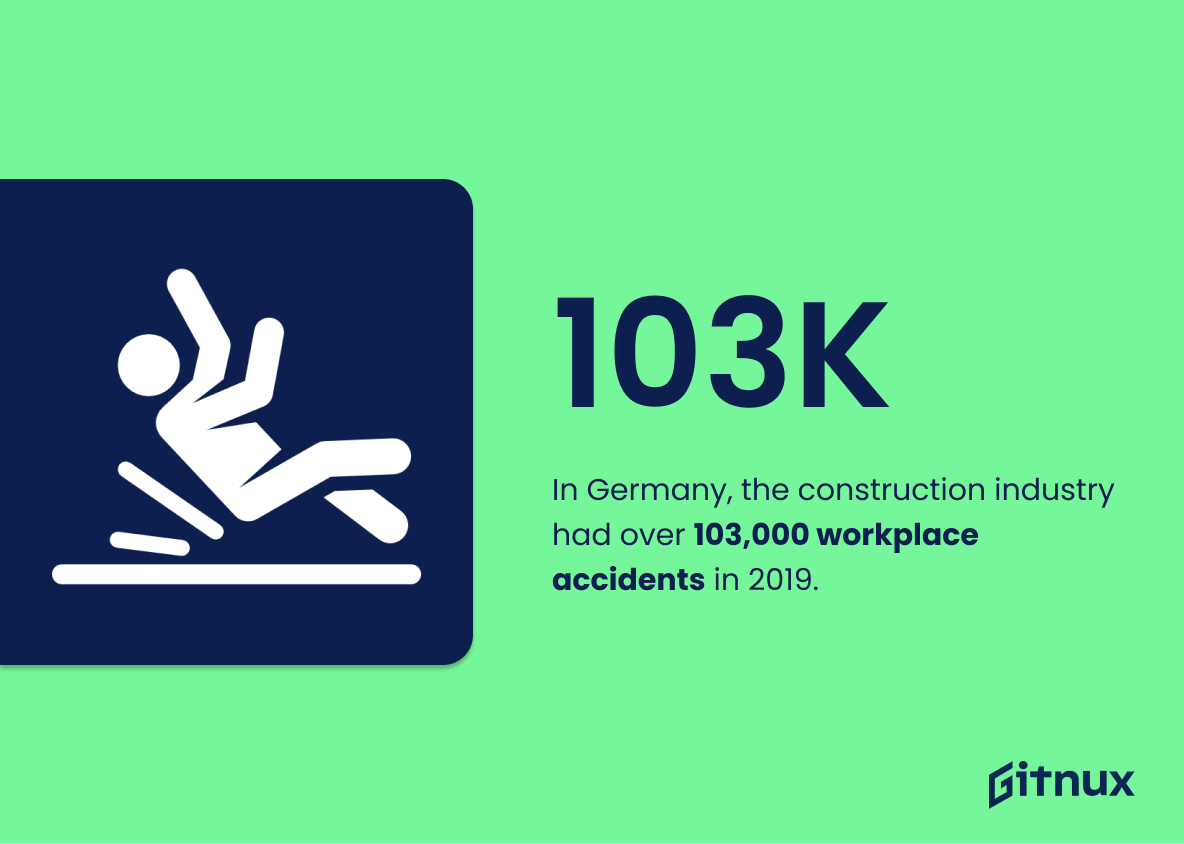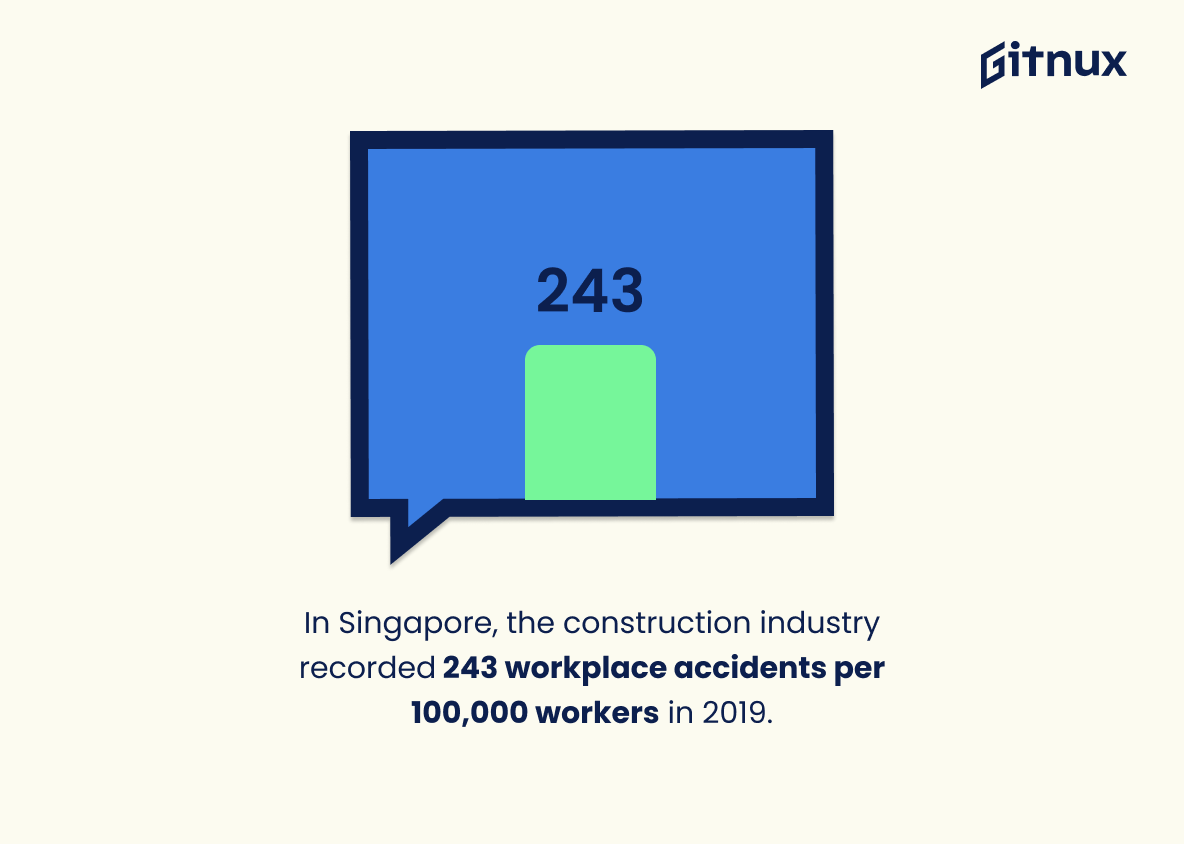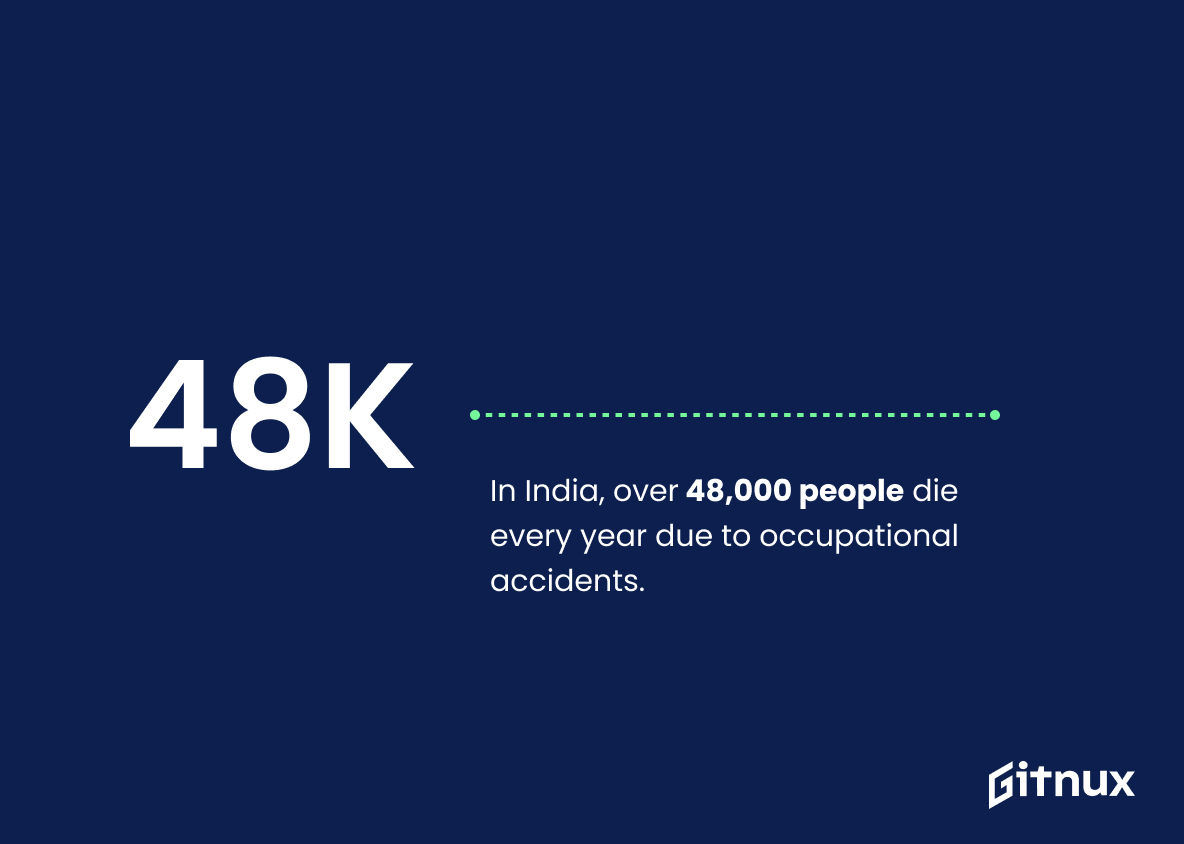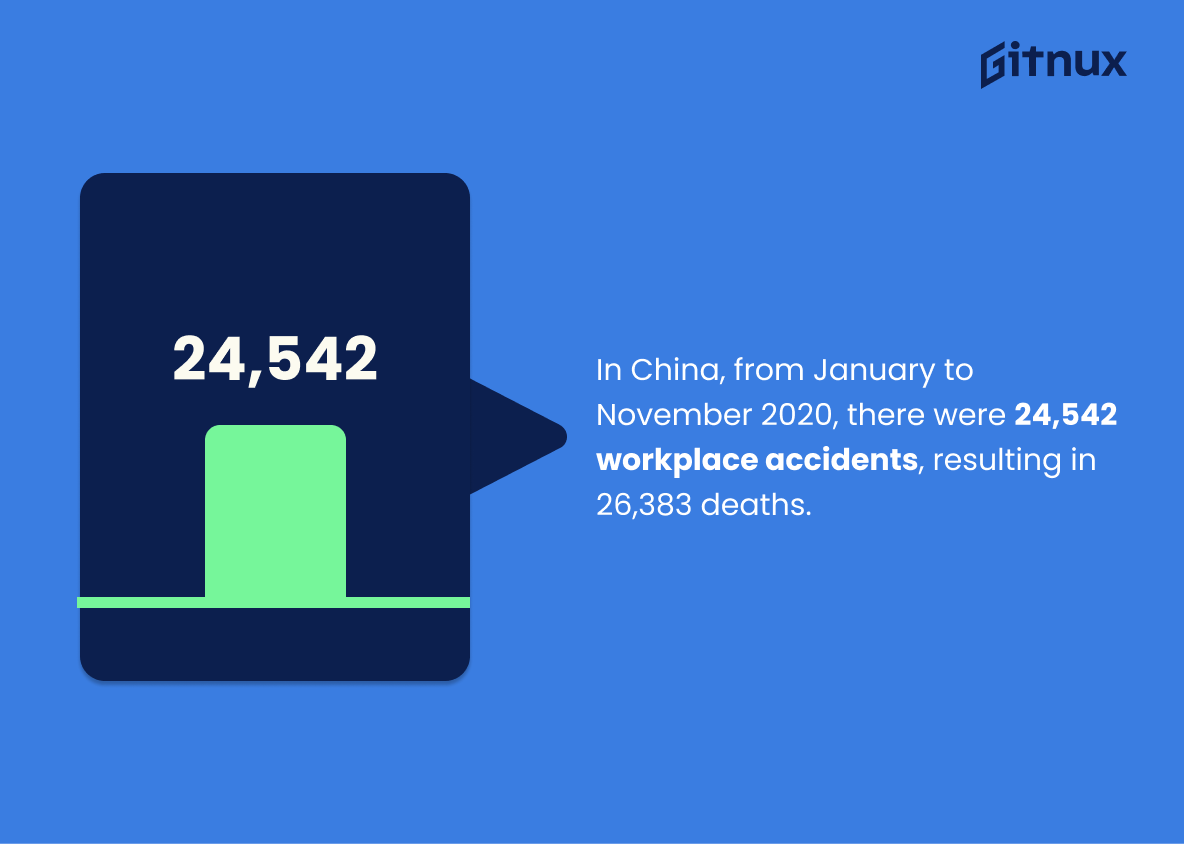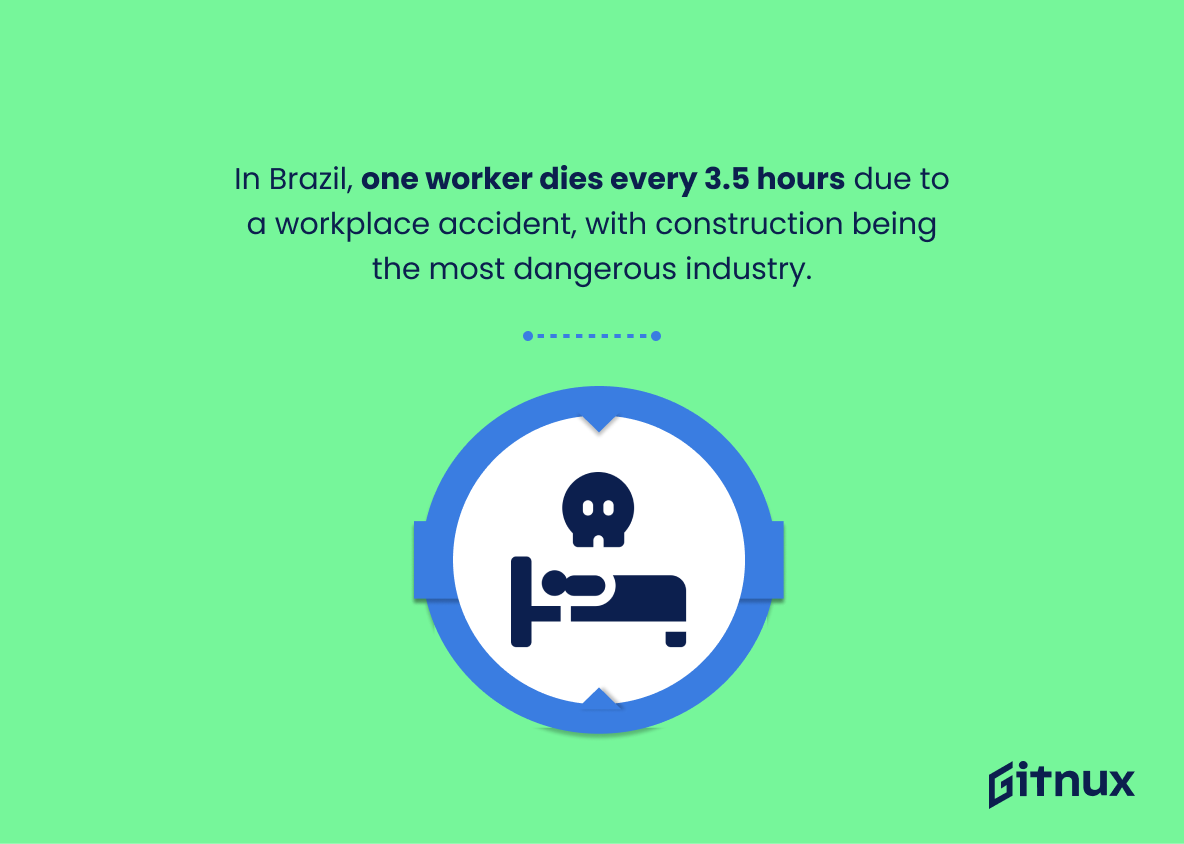Workplace accidents are a serious issue that affects workers all over the world. Every 7 seconds, a worker is injured on the job in the United States alone and globally, 2.78 million people die each year due to work-related accidents and diseases. In this blog post, we will be looking at workplace accident statistics from around the world including countries such as Australia, Canada, China, India and Brazil among others. We’ll also look at which industries have higher rates of injury or fatality than others so you can better understand how to stay safe while working.
Workplace Accident Statistics Overview
Falls, trips, and slips caused 27% of non-fatal work-related injuries in the UK in 2019/2020.
This statistic is a stark reminder of the importance of workplace safety. It highlights the fact that falls, trips, and slips are a major cause of non-fatal work-related injuries in the UK, and that employers need to take steps to reduce the risk of such accidents occurring. It also serves as a warning to employees to be mindful of their surroundings and take extra care when working in potentially hazardous environments.
In the US, the three most common types of workplace accidents are overexertion (35%), contact with objects and equipment (26%), and slips or falls (25%).
This statistic is a powerful reminder of the importance of workplace safety. It highlights the fact that overexertion, contact with objects and equipment, and slips or falls are the three most common types of workplace accidents in the US, accounting for a combined 86% of all workplace accidents. This information is invaluable for employers and employees alike, as it can help them identify potential risks and take steps to reduce the likelihood of accidents occurring.
According to the International Labour Organization, 340 million occupational accidents occur worldwide each year.
This statistic is a stark reminder of the sheer number of occupational accidents that occur each year, highlighting the importance of workplace safety and the need for employers to take steps to protect their employees. It serves as a powerful reminder that workplace accidents can have serious consequences, and that employers must take the necessary steps to ensure the safety of their employees.
Every year, 240 million workers worldwide suffer from work-related diseases or injuries, according to the World Health Organization.
This statistic is a stark reminder of the devastating impact workplace accidents can have on workers around the world. It highlights the need for employers to take proactive steps to ensure the safety of their employees and to reduce the risk of accidents occurring in the workplace. It also serves as a reminder of the importance of having adequate safety measures in place to protect workers from harm.
Approximately 2.78 million people die each year due to work-related accidents and diseases, globally.
This statistic is a stark reminder of the devastating impact that workplace accidents and diseases can have on individuals and their families. It serves as a powerful reminder of the importance of workplace safety and the need for employers to take all necessary steps to ensure the safety of their employees.
In 2019, the US construction industry recorded the highest number of workplace fatalities at 1,061.
This statistic is a stark reminder of the dangers of the construction industry and the need for greater safety measures to be taken. It highlights the importance of workplace safety and the need for employers to take responsibility for the safety of their employees. It also serves as a warning to workers to be aware of the risks associated with their job and to take the necessary precautions to protect themselves.
In the UK, 111 workers suffered fatal accidents between 2019 and 2020, an increase from 147 in the previous year.
This statistic is a stark reminder of the dangers of the workplace and the importance of safety measures. It highlights the fact that, despite efforts to reduce workplace accidents, the number of fatalities has still increased in the past year. This is a worrying trend that needs to be addressed in order to ensure the safety of workers in the UK.
In Europe, work-related accidents result in the loss of approximately 3.3% of the GDP each year.
The staggering statistic that work-related accidents result in the loss of 3.3% of the GDP each year in Europe is a stark reminder of the importance of workplace safety. This figure highlights the financial burden of workplace accidents, and serves as a call to action for employers to prioritize safety in the workplace.
In 2019, the US transportation and warehousing sector experienced 251,800 nonfatal workplace injuries and illnesses.
This statistic is a stark reminder of the dangers that workers in the US transportation and warehousing sector face on a daily basis. It highlights the need for employers to take proactive steps to ensure the safety of their employees and to reduce the number of workplace injuries and illnesses. It also serves as a warning to workers to be aware of the potential risks and to take the necessary precautions to protect themselves.
30% of all non-fatal workplace injuries in the United States involve retail workers, making it one of the industries with the highest injury rates.
This statistic is a stark reminder of the dangers that retail workers face on the job. It highlights the need for employers to prioritize safety in the workplace and to ensure that their employees are adequately trained and equipped to handle the risks associated with their job. It also serves as a warning to other industries that may not be aware of the potential risks of workplace accidents and injuries.
In Germany, the construction industry had over 103,000 workplace accidents in 2019.
This statistic is a stark reminder of the importance of workplace safety in Germany. It highlights the need for employers to take proactive steps to ensure the safety of their employees and to reduce the number of workplace accidents. It also serves as a warning to other countries that workplace safety should not be taken lightly.
In Singapore, the construction industry recorded 243 workplace accidents per 100,000 workers in 2019.
This statistic is a stark reminder of the importance of workplace safety in Singapore. It highlights the need for employers to take proactive steps to ensure the safety of their workers and to reduce the number of workplace accidents. It also serves as a warning to workers to be aware of the potential risks in their workplace and to take the necessary precautions to protect themselves.
In India, over 48,000 people die every year due to occupational accidents, with the construction industry accounting for the largest percentage.
This statistic is a stark reminder of the dangers of the workplace, particularly in the construction industry. It highlights the need for employers to take greater responsibility for the safety of their employees, and for workers to be aware of the risks they face in their daily work. It also serves as a call to action for governments to implement stricter regulations and enforcement of workplace safety standards.
In China, from January to November 2020, there were 24,542 workplace accidents, resulting in 26,383 deaths.
This statistic is a stark reminder of the devastating consequences of workplace accidents in China. It highlights the urgent need for improved safety measures in the workplace to protect workers and prevent further tragedies. The sheer number of deaths is a sobering reminder of the importance of workplace safety and the need for employers to take responsibility for the safety of their employees.
In Brazil, one worker dies every 3.5 hours due to a workplace accident, with construction being the most dangerous industry.
This statistic is a stark reminder of the dangers of the workplace, particularly in the construction industry. It highlights the need for employers to take greater responsibility for the safety of their employees and to ensure that they are adequately protected from potential hazards. It also serves as a warning to workers to be aware of the risks they face and to take the necessary precautions to protect themselves.
Conclusion
Workplace accidents are a serious issue that affects workers all over the world. The statistics presented in this blog post demonstrate just how widespread and dangerous these incidents can be, with millions of people suffering from work-related injuries or illnesses each year. In addition to fatalities, nonfatal workplace injuries also occur frequently across many industries, particularly retail and construction. It is clear that more needs to be done to reduce the number of workplace accidents globally so that everyone can enjoy safe working conditions.
References
0. – https://www.hse.gov.uk
1. – https://www.who.int
2. – https://www.osha.europa.eu
3. – https://www.ecns.cn
4. – https://www.bls.gov
5. – https://www.injuryfacts.nsc.org
6. – https://www.mom.gov.sg
7. – https://www.timesofindia.indiatimes.com
8. – https://www.ilo.org
9. – https://www.destatis.de
10. – https://www.riotimesonline.com
11. – https://www.nsc.org
ZipDo, cited June 2023: Workplace Accident Statistics
